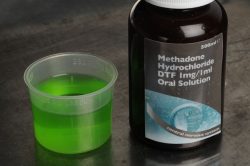Opioid agonists are drugs that activate opioid receptors in the brain to cause an opioid effect. Morphine, heroin, hydrocodone, oxycodone, methadone, and opium are full opioid agonists that activate the receptors to their full extent affecting cognition, sensory perceptions, feelings, and behaviors.
How do Opioid Agonists Work?
Opioids alter neuronal communications between the brain and body by enhancing or lessening the neurons ability to convey the information to other neurons. Opioid agonists are clinically used to produce a calming and analgesic effect, but, opioid agonists such as morphine and heroin are quick to activate these receptors, flooding the brain with dopamine, and producing the euphoria many people look for when they want to get “high”.
The effects only last as long as the opioid agonist remains attached to the receptor and the effects of most opioids are short lived. As biological processes become adapted to these short-acting opioid agonists, the person needs to repeat administrations up to several times a day or suffer unpleasant physical and psychological withdrawals. The longer the person uses these drugs, the more detrimental they can become with high rates of dependency and addiction.
Methadone used for the Treatment of Opioid Addictions

Methadone is an opioid agonist used for addiction treatment.
Methadone is what’s known as a long-acting opioid agonist that metabolizes more slowly than other opioid agonists. It remains stored in bodily tissues where it can be gradually released to the blood stream on an even basis. At optimal doses, it can relieve the discomfort of cravings and withdrawals associated with short-acting opioid agonists up to 24 hours or more without producing the adverse effects of euphoria or sedation.
Methadone is effective in helping the person to detox and eliminate their dependency on other types of opioid agonist drugs. At a steady state of dosing, methadone builds up in the person’s system, producing a cross-tolerance to other opioid agonists blocking their effects to reduce or eliminate their illicit use.
In a methadone maintenance program, methadone can be used for extended periods of time to help re-balance the brain’s neuronal communications and improve the person’s overall health. According to the SAMHSA,” Comprehensive, long-term opioid agonist maintenance remains the treatment with the best track record of controlling opioid use and saving lives.”
The Partial Opioid Agonist – Buprenorphine
Buprenorphine was approved for use in the treatments for opioid addictions as a partial opioid agonist that activates opioid receptors to a lesser degree than methadone. It is often used in combination with naloxone, an opioid antagonist, in the medication brand, Suboxone. By combining the partial opioid agonist, buprenorphine, with the opioid antagonist, naloxone, the abuse potential is reduced. Should the person try to inject the drug or take too much too quickly, the naloxone will reverse the opioid effects rendering this type of abuse virtually non-feasible. Opioid antagonists such as naloxone and naltrexone are important medications used in the reversals of opioid overdose.









